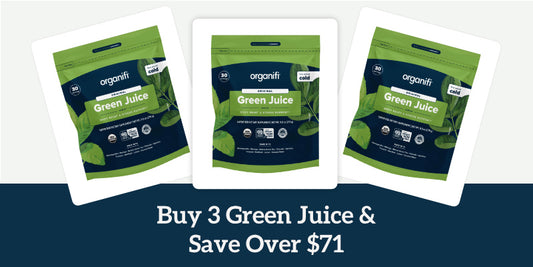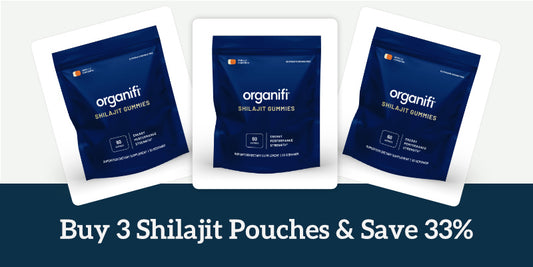Joint pain symptoms: the telltale signs that your body needs lubrication.
Swelling, cracking, locking, and stiffness are some of the most common symptoms of joint damage. If you’re experiencing knee pain, stiff limbs, lower back pain, tight hips, or shoulder pain, your joints could need attention and lubrication.
Joints connect bones and allow the body to move, while also supporting it on upright positions. Any damage to these critical structures could lead to discomfort, limited motion, and pain.
Various conditions may lead to joint pain, but they’re mostly caused by trauma, injuries, wear, disease, or the natural degradation of the ligaments, tendons, cartilage, bone, or bursae surrounding the joint.
Symptoms of unhealthy joints:
- Redness
- Tenderness
- Swelling
- Stiffness
- Weakness
- Cracking
- Locking
- Pain
Joint pain is one of the most common issues we face as we age. However, despite how common the issue is, we don’t always know how to spot the signs that the joints ( knees, elbows, wrists, ankles, etc.) need help. Sometimes, we don’t notice until it’s too late and the body experiences arthritis.
Fortunately, natural anti-inflammatory foods could help relieve or prevent some of these issues, like turmeric for joint pain, collagen to stimulate cartilage production, and other supplements that aim to lubricate the space where bones connect.
In this article, we’ll help you identify the symptoms of light and severe joint pain, potential causes and what to do about it before it’s too late.
Why Joints Need Lubrication
There are between 300 and 400 joints in the human body, some provide stability and flexibility while others provide stability alone. These joints are the places where two or more bones connect, in general, to support a mobile structure in the body: knuckles, knees, wrists, shoulders, elbows, hips, ankles, and more.
To avoid the wear and friction bones inevitably would face if they rubbed together without lubrication, a lubricant called synovial fluid protects the bones. In addition to cartilage and synovium, this helps cushion the movement avoiding the chafing that can damage the bones and cause pain.
However, aging, exercise, strenuous movements, wear, tear, excess weight, and injuries can impact the joint degrading the cartilage and lubricant which could lead to inflammation, breakage, and pain.
7 Signs Your Joints Need Attention (and what to do about it!)
Joint pain issues can go from barely noticeable to debilitating and it can really affect the quality of your life.
#1 Cracking and Popping:
We’ve all experienced at one point or another popping or cracking of the knees, ankles, lower back, or even the neck when turning our head around. Fortunately not all cracking and popping joint noises are cause for serious concern.
William Kormos, M.D., Editor in Chief of Harvard Men's Health Watch, affirms that noise comes from “tendons or muscles moving over the joint” and “from the popping of nitrogen bubbles normally found in the joint space.” This naturally existing gas produces the loud crack and when not accompanied by redness, pain or swelling, it can be ignored.
However, if you face persistent and consistent cracking of some joint along with pain, discomfort, swelling, or reddening it could be time to consult a doctor.
What to Do:
- Move Around: stagnation keeps the joint fluid in place and keeps it from properly lubricating the joint. The more active you are the more lubricated the joints are.
- Consider Natural Lubrication: Arnica globules, collagen, glucosamine, and turmeric for joint pain could be good supplements to add to your diet.
-
Stretch: clicking noises at the gym could come from tight muscles forcing bone friction.
#2 Crunching
Usually felt when rotating the shoulder or opening the hips during certain positions, like sitting cross legged or in “butterfly” pose, crunching sounds of ball-and-socket joints might signal an underlying condition of the joint.
If not associated with pain, lubrication of the joint with motion, anti-inflammatory foods (like turmeric for joint pain) or medication (ibuprofen or diclofenac potassium) could be enough. If the problem persists and hurts when moving the join in the mid-range of motion, or troubles your sleep it could be an early sign of bursitis or arthritis. Consult a licensed physician.
What to Do:
- Monitor the Triggers: keep a journal with the occasions where you heard or felt the crunching noise, note if there is pain on or around the joint.
- Relax the Muscles: muscle tension exacerbates underlying conditions, stretch the muscles and considers a topical muscle relaxant like arnica, turmeric for joints, or OTC lotions such as BenGay.
- Alternate Hot and Cold: use hot and cold compresses around the area if the pain intensifies.
- Hydrate and Lubricate: knowing natural joint pain relief foods and nutrients may help you hydrate the joints from the inside. Some examples include holy basil, pine bark, collagen, anthocyanins from berries, and turmeric for joint pain.
#3 Stiffness or Loss of Mobility
In addition to pain, discomfort, and popping noises, a major symptom of unhealthy joints is decreased range of motion, stiffness, and difficulty to execute regular “passive” tasks. For instance: needing to hold a chair to hoist yourself up from a seat, difficulty rising out of bed, stiffness when taking the stairs or holding an item, pain from typing.
What to Do:
- Exercise: “motion is lotion” if you’re starting to experience stiffness adding low-impact cardiovascular exercise along with some light stretching could help reactivate internal lubrication.
- Physical Therapy: for more persistent discomfort a physical therapist may be able to correct physical injuries and provide exercises geared towards joint rehabilitation.
- Anti-Inflammatory Foods and Ointments: nutrition may help your body produce more of the natural compounds that maintain cartilage, synovial fluid, tendons, muscles and bones in optimum condition.
Glucosamine, collagen, calcium, Vitamin D, pine bark, and turmeric for joint pain are a few of the supplements you could consider. Talk to your doctor before taking supplements or medication that may interact with other medicine - even if natural.
#4 Weakness and Motion Avoidance
Avoiding certain movements, sitting in a specific position, taking the stairs, or lifting objects could be signs that the joins need attention. Associated discomfort, redness, swelling or pain in the joints may make you consciously and unconsciously avoid situations that engage the joint.
What to Do:
- Strengthen Muscles Around the Joint: exercises that focus on control and strength or resistance help muscles and tendons keep the joint stable.
- Move: move slowly and carefully the joint, avoiding motion could bring about larger issues or worsen the condition.
- Get Help: stiffness affected by cold temperature, weather changes, or daily activities ought to be reported to a licensed physician.
- Monitor Dietary Habits: acidic diets high in sugar, salt, trans fats, and white carbohydrates may be linked to arthritis and worsening joint pain. Alkaline diets could help manage the symptoms, consider citrus foods, berries, dark leafy greens rich in calcium, Vitamin C and turmeric for joint pain management.
#5 Swelling
When a joint appears larger than usual, irregularly shaped, or inflamed it could be a sign of injury, tendonitis, bursitis, rheumatoid arthritis, osteoarthritis, trauma, or infection. If the swelling doesn’t go away in a couple of days consult a doctor.
What to Do:
- Protect and stabilize the joint with a brace or wrap until medical attention can be provided.
- Rest the joint.
- Avoiding triggering activities that cause pain to flare up.
- Put ice on the joint for up to 15 minutes, three or more times a day to support anti-inflammatory processes surrounding it.
- Compress the joint in a comfortable way that restricts mobility and supports rest during sleep.
- Support your system with anti-inflammatory foods like tomatoes, almonds, dark leafy greens, and turmeric for joint pain. You may also seek OTC pain medication with anti-inflammatory properties (acetaminophen, ibuprofen, diclofenac) until medical care is available.
#6 Redness
Redness of the skin surrounding a joint is often accompanied by stiffness, warmth, swelling limited motion, and or pain. It could be an early sign of rheumatoid arthritis a systemic inflammatory condition of the joints.
Inflammation of the veins that bring blood to the skin, muscles, and structures around the joint might show up on the skin as red patches similar to a rash. They may also itch and surround a pea-shaped nodule inside the skin over fleshy parts of the body or the bone.
What to Do:
Consult a doctor as soon as possible. If it’s the first time, monitor the condition and report to your primary care physician. They may prescribe antibiotics or topical analgesics. Support your system with nutrition avoiding pro-inflammatory foods, excess sodium, sugar, and alcohol.
Consider hot or cold compresses and anti-inflammatory foods like tomatoes, olive oil, dark leafy greens, fatty fish, berries, nuts, and turmeric for joint pain.
#7 Pain
Occasional flare-ups of pain when doing regular activities could be signs of an important need to lubricate and tend to the joints.
When going up the stairs, sitting down or getting up, stretching limbs, sleeping, jogging, or driving trigger pain -even if mild- the body may need support. Simple changes like exercising, stretching, getting a massage, and eating joint-friendly foods could reduce the pain or eliminate it completely.
Certain foods like pine bark extract, holy basil, arnica, turmeric for joint pain, and supplements like glucosamine and chondroitin sulfate, or collagen might aid in recovery and prevent further joint wear.
Persistent and debilitating pain might be a sign of physical trauma or disease that needs attention and, potentially, more extensive care. Consult with your doctor or a physical therapist; they may perform a physical exam to check for fluid around the joints, warmth, redness, or swelling and provide a course of treatment.
Bottom Line:
The causes and symptoms of joint pain are varied, but not inevitable. Exercise, a healthy diet, stretching, rest and anti-inflammatory foods or supplements may be the preventative care they need.
Neglecting to hydrate and lubricate the joints is like driving a car without changing the oil. Try supplements like calcium, vitamin D, glucosamine, turmeric for joint pain, pine bark, or silica (if vegan)to help your body produce more of its natural stores or lubricant.




